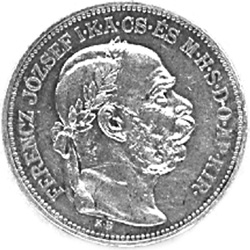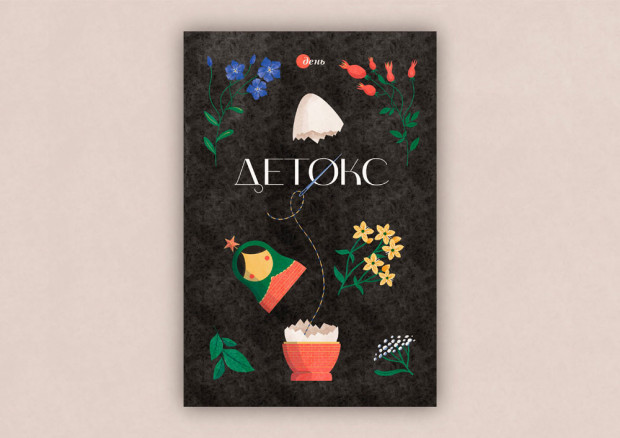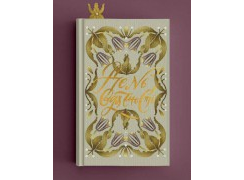from St. Volodymyr to our day

(Continued from Nos. 37 and 39)
By the end of the eighteenth century, after the third partition of Poland, the whole Right-Bank Ukraine came under the domination of two powerful states, the Russian and Austrian Empires, that largely determined the political climate of Europe.
The nineteenth century Russian monetary system was one of the most standardized in the world. In the times of Peter I, the decimal system was introduced, later to be accepted by most countries. Peter’s struggle against the spread of other countries’ coins in his empire led to the almost complete eradication or restriking of them.
While a situation bordering on anarchy existed in the monetary system on the vast territories of Western Europe (especially in fragmented Germany and Italy), order reigned on the boundless expanses of the Romanovs’ empire. The destruction of the Sich, the bulwark of Ukrainian statehood, by Catherine II killed the last hope of Ukraine’s issuing its own coins.
The obverse of silver rubles minted under Emperors Alexander I (1801- 1825), Nicholas I (1825-1855), and Alexander II (1855-1881) portrayed a two-headed eagle, Russia’s official emblem, while the reverse indicated the face value. The purity of ruble silver set in 1764 (.750) was raised to .830 fine by the 1820s and thirties, then further to .868 under Alexander III (1881-1894), and .900 under Nicholas II (1895-1917). The purity of small silver coins corresponded before 1810 to that of large denominations (25, 50 kopecks, and the ruble), but then it began to deteriorate (50% silver) and remained unchanged until 1867.
As copper and silver coins were issued, the government also minted gold coins, half imperials (five rubles) and imperials (ten). A special case is the issue of platinum coins. After large deposits of platinum had been discovered in the Urals in the mid-1820s, a 3- ruble coin was put into circulation in 1828, and 6- and 12-ruble ones in 1830. The minting of these coins (until 1845) can be explained by the fact that platinum had not yet found any technical application in the nineteenth century and hence was not valued very highly.
Under Alexander I, after the victory over Napoleon, the Congress Kingdom of Poland was established in 1815 as part of the Russian Empire. The coins minted in Warsaw, the kingdom’s capital, also gained wide currency in northwest Ukraine, where the population had become accustomed to the Polish monetary system over many centuries. The Warsaw mint issued one grosz and three groszy copper coins, as well as five and ten grosz ones made of billon that contained less than 50% silver. Silver coins were at one zloty, equal to 30 groszy or 15 kopecks, two zloty (30 kopecks), 5 zloty (3/4 ruble), and 10 zloty (1.5 rubles). Coins with a face value of 25 and 50 zloty were minted of gold. These coins bore inscriptions in Polish. In 1835 the picture of the Polish eagle was replaced by that of the dragon-slaying St. George. Silver and gold coins portrayed Alexander I. Russian coins proper (except those issued experimentally) did not bear the emperor’s image. From 1832 to 1850, Warsaw and St. Petersburg issued bilingual coins with the face value written in Russian (in kopecks and rubles) and Polish (in grozsy and zloty): from five kopecks (ten groszy) in silver to three rubles (20 zloty) in gold.
By 1839 the Russian Empire experienced the need to strengthen its financial system undermined by the issuance of paper money. The printing machines set in motion back in 1769 had shaken, over seven decades, the confidence of the population in the copper coin that kept the paper money afloat. For example, in the early nineteenth century a ruble expressed in paper bills or copper coins was only valued at 68 silver kopecks. The 1839 manifesto On the Monetary System proclaimed, “The Russian-minted silver coin... as the main circulation coin and the silver ruble as the main standard (monetary unit) of money circulating in the state.” The reform introduced the so-called silver monometallism, whereby one of the precious metals (gold or silver) served as the basic legal tender, which only existed, however, from 1843 to 1852. A heavy copper coin (16 rubles from a pud (16 kg) of copper), designed to maintain the stable paper ruble, was minted from 1839 to 1848. The word “silver” was included in the face value inscription on the series of these coins from 1/4 kopeck to 3 kopecks.
Money circulation on the territory of Ukraine practically had not differed from those throughout Russia by the mid-nineteenth century. There were the copper polushka (1/4 kopeck), denga (1/2 kopeck), 1, 2, 3 and 5 kopeck coins; billon 5, 10, 15 and 20 kopeck coins; and silver 25, 50 kopeck and one ruble coins. In the nineteenth and early twentieth century 3, 5, 10, 15 and 20 ruble gold coins were also minted.
The 1839-1843 reform only temporarily reinforced Russia’s finances. The ill-fated Crimean War (1853- 1856) triggered a new crisis, and banks refused to exchange paper bills for gold and silver. A period of the wide circulation of paper money began.
After 1876, the St. Petersburg mint was the Russian Empire’s only center of coin production. But, starting from 1861, the Tsarist government often resorted to placing minting orders abroad. For instance, Paris and Strasbourg issued 10, 15 and 20 kopeck billon coins. In 1896. the Paris mint struck 25, 50 kopeck and ruble silver coins. And in 1897-1899 Brussels and Paris minted .900 fine 50 kopeck and ruble coins.
In 1895-1897 Minister of Finance Sergei Witte carried out a new money reform which introduced gold monometallism. Witte allowed free exchange of bank notes (issue of them was restricted) for gold coins at a one to one ratio. Simultaneously, the ruble’s gold parity was reduced by a third, with the imperial now equaling 15 rubles.
The first signs of crisis in the monetary system came about in 1904- 1907 caused primarily by the Russian-Japanese war and Revolution of 1905. In 1914 the Russian Empire entered the war later called World War I. Four days before hostilities began against Germany and Austria-Hungary, the Tsarist government announced that banks would stop exchanging paper money for gold. However, this was a belated measure: only 58 million gold rubles were withdrawn, while the population managed to hide over 436 million. Still more gold in coins — up to 452 million — made its way abroad. The same fate also befell silver and copper coins. In an attempt to bear its war expenses, the Tsarist government sharply increased the supply of paper money, as well as its surrogates, which often bore a caption, such as “in circulation along with copper (silver) coin.” Owing to these measures, the purchasing power of the Russian ruble dropped to 27 kopecks by the beginning of 1917.
The lands of Galicia, Bukovyna, and Transcarpathia were part of the Austrian (Austro-Hungarian from 1867) Empire until November 1918. Before the Habsburg Empire became a dual monarchy, these lands were mainly served by Austrian coins: copper kreutzers (one silver thaler equaled 90 kreutzers), minted until 1891, silver thalers, as well as silver and gold florins.
In 1892, after Austria-Hungary carried out a monetary reform, the system of money in circulation was entirely pegged on the krone. They minted 1, 2, and 5 krone silver coins were minted along with 10 and 20 krone gold coins separately for Austria and Hungary and, accordingly, with inscription in Austrian German and Hungarian. Although issued for the two parts of the Danube monarchy, the coins had the same weight and purity. Transcarpathia was part of the Hungarian part of the multiethnic empire, while Galicia and Bukovyna belonged to the Austrian crown. The copper-nickel haller, was the fractional coin. As World War I broke out, Austria-Hungary, as well as Russia, saw the collapse of the exchange system of paper money with gold and silver. The end of the war in November 1918 signaled a new era in the history of coin circulation on Ukrainian soil.
Newspaper output №: Section






